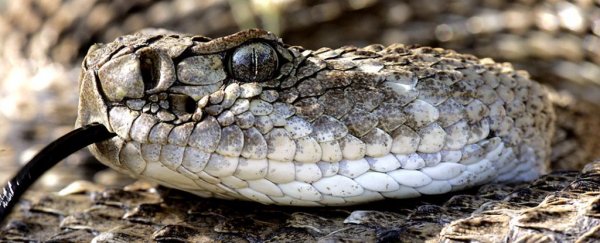Bacteria are resourceful little organisms. They can live in some of the weirdest, most inhospitable places on our planet – arid deserts, toxic acidic lakes, even deep in Earth's crust below the ocean floor.
But scientists have just discovered a new, very unexpected habitat for the hardy little microbes: the venom of snakes and spiders. This contradicts what we thought we knew; such venoms contain antimicrobial compounds, which scientists assumed to mean they were sterile environments in which no microbes could thrive.
The discovery to the contrary means bacteria that cause infections could already be present in venom before a victim is even bitten, suggesting that anyone bitten by a snake or spider may also need to be treated for infection.
"We found that all venomous snakes and spiders that we tested had bacterial DNA in their venom," notes molecular biologist Sterghios Moschos of Northumbria University in the UK.
"Common diagnostic tools failed to identify these bacteria correctly – if you were infected with these, a doctor would end up giving you the wrong antibiotics, potentially making matters worse."
Although we've thought for a long time that venom must be sterile, infected bites are not. Up to three-quarters of snake-bite victims develop infections in the bite wounds; these are usually attributed to secondary infection from bacteria that live in the mouth of the snake, left behind in the poop of its prey.
However, recent studies have revealed that the mouths of non-venomous snakes were more sterile than those of venomous snakes – odd, given the antimicrobial compounds found in venom – and that the bacteria found therein are likely native, and not colonized from prey microbiota.
Moschos and his colleagues wanted to know whether venom and venom glands could be the source of the additional bacteria, and if so, how microbes adapted to live in what for them ought to be an extremely hostile environment.
They sampled the venom and envenomation apparatus of five snake species: puff adder Bitis arietans, black-necked spitting cobra Naja nigricollis, common lancehead Bothrops atrox, western diamondback rattlesnake Crotalus atrox and coastal taipan Oxyuranus scutellatus.
They also sampled two spider species – Indian ornamental Poecilotheria regalis and Brazilian salmon pink bird-eating tarantula Lasiodora parahybana – and set about isolating and examining the microbes from the venom.
Some of the microbes in the snake mouths were likely oral or environmental, but some were found in both the venom and venom glands, including, in one snake species, a common bacterium found in the digestive tracts of humans, Enterococcus faecalis.
This was great, because the team could compare it to E. faecalis samples found in hospitals.
"When we sequenced their DNA we clearly identified the bacteria and discovered they had mutated to resist the venom. This is extraordinary because venom is like a cocktail of antibiotics, and it is so thick with them, you would have thought the bacteria would not stand a chance. Not only did they stand a chance, they had done it twice, using the same mechanisms," Moschos says.
"We also directly tested the resistance of E. faecalis .. to venom itself and compared it to a classic hospital isolate: the hospital isolate did not tolerate the venom at all, but our two isolates happily grew in the highest concentrations of venom we could throw at them."
Given how quickly a bacterial colony can develop antibiotic resistance, and how long microbes have been doing so, perhaps this should be unsurprising. Surprised or not, however, the results suggest that treating the infected bites by venomous animals may not be as simple as treating a secondary infection, due to the microbes' adaptations.
However, these adaptations may also give us a new tool to understand antibiotic resistance, and how to circumvent it in other circumstances.
"By exploring the resistance mechanisms that help these bacteria survive," says molecular biologist -author Steve Trim of Venomtech, "we can find entirely new ways of attacking multi-drug resistance, potentially through engineering antimicrobial venom peptides."
The research has been published in Microbiology Spectrum.
